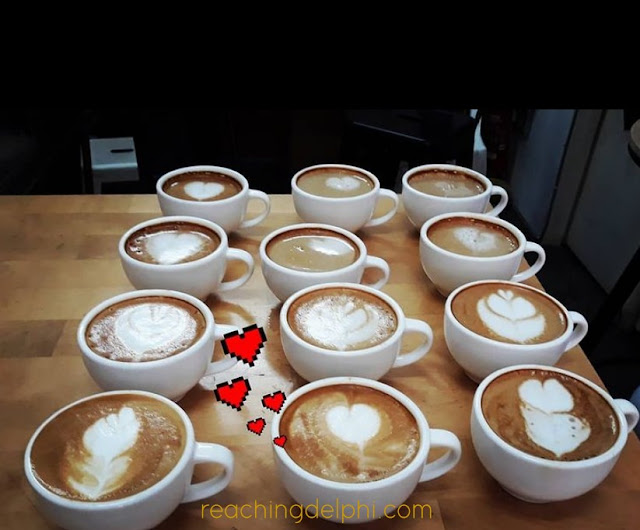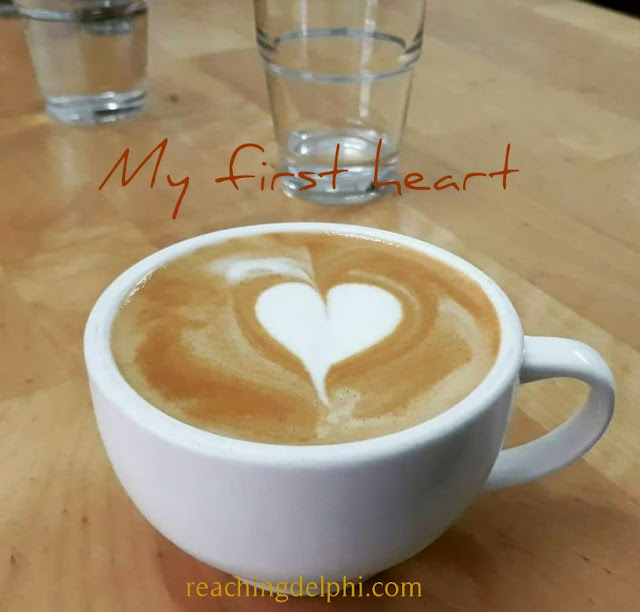Latte Art - What's the Picture?
However, there is one humble luxury I missed dearly during the lockdown months – a picture in my coffee! I didn't know the techniques behind creating one then, so I could only get foam art when I visited a café. See, even a simple foam heart in my coffee transports me to another place in my thoughts.
This imprint on the hot drink, the one that instantaneously puts a smile on my face, is called latte art. For the life of me, I cannot recall when these little hearts and tulips caught my fancy nor when the latte art trend caught on in Malaysia. But as in all other parts of the world, I suspect the appreciation for these creations grew along with the mushrooming of espresso cafés in the city. So today, not only is this a skill respected by coffee lovers, photographers and bloggers, there are also annual international competitions to recognise these die-hard artists.
Although Italy leads the espresso world, coffee art was
popularised in the United States in the late ’80s. Did you notice I mentioned
both espresso and art? That’s because latte art is essentially
creating coffee by pouring microfoam (crema) into a shot of espresso to
form a pattern on the surface of the coffee. Like me, you might be wondering who
actually created latte art. Well, I am still searching for a convincing answer.
Microform, simply put, is finely textured milk made using the espresso machine’s steam wand, which pumps steam into a pitcher of milk. Another form used is macrofoam, which has thicker bubbles. Microfoam is used in the making of a coffee latte while macrofoam is often used when making a cappuccino. If you are a beginner with a limited budget to spare but would still like to try this at home, you could create your own crema using a milk frother or a handheld whisker, like I do.
On most days, the pattern, along with my orders at the cafés, are white hearts or tulips. And these were the two designs I learned to pour in latte art class too. I don’t know how the coffee baristas do this, but I got rather anxious each time I poured the crema in, and this resulted in all sorts of shapes and sizes of hearts. Some popped up long, some were fat, and one even turned out to be a shapeless ribbon. Expensive coffee mistakes! However, by the end of the course, I was pleasantly high on the caffeine aroma and learnt a few techniques that would come in handy in the future.
The two common latte art techniques are free pouring, which I
mentioned briefly in the earlier paragraphs, and etching. As in the name, the
shape is created during the pour in free pouring. In etching, the pattern is
drawn on the foam after the pour, using a tool or stick.
In contrast to the commonly seen white patterns, edible food dye may also be added to the crema to add different colours to the design. This is called rainbow latte art. Here’s one of my rose latte.
Three-dimensional latte portraits never fail in the awe category. This style is believed to be pioneered by Chang Kuei-fang, a barista from Kaohsiung City, Taiwan. If you like your coffee hot, be prepared for something a little cooler, as each skillfully created design can take up to 20 minutes to complete.
Regardless of the technique, latte art is inevitability a desired skill for any barista because they either elate or make their customer scowl. Seeing a beautiful and well-thought-out design momentarily lifts my spirits during low points. Of course, the heart on the coffee is not the solution for a project that’s heading south, but it can be alleviating, especially when you feel everything is turning against you.
Here are some of my favourite latte art moments.
- Me in a mug.
- My first creation.
- Two hearts.
- Personalised latte art (by barista – Iman).
If you desire an alluring art but are in a rush or find latte
art techniques too challenging to master, you could opt to use a latte art
stencil. The crema is prepared the same way and poured into the espresso to
form a layer of foam. Next, cocoa powder is sprinkled on the stencil over the
foam. Voilà! Look here, I am an expert too. 😊
With the right tools, personality, and skills, anyone can
learn how to make artsy latte designs. Having attended a short course myself, I
can honestly tell you that latte art is more complicated than what you see on
YouTube. Perfect and symmetrically produced designs reflect the number of hours
and cups of coffee the barista has put in. Kudos to all the passionate Michelangelos who have taken the time to understand the customer's emotions and produce
inspiring images.
By the way, Reaching Delphi, RD, turned five recently. Happy blogaversary, kiddo! And thank you RD for reminding me every day to count the stars and keeping my sanity intact.
To everyone who has supported me and been on this journey with me – here’s more than just a thank-you. You are special to me and RD.
Today, I take you to my very first post in January of 2017, “Where Do I Begin to Tell the Story,” which reminds us that a perfect, premium cup of coffee is one that is affordable within our own means – not the one that puts pressure on us financially or emotionally. Counting Stars, Reaching Delphi – a toast for a better 2022 and a perfect cuppa. A toast for Reaching Delphi – and for many more inspiring and uplifting moments. Cheers!












"Counting Stars, Reaching Delphi – a toast for a better 2022 and a perfect cuppa. A toast for Reaching Delphi – and for many more inspiring and uplifting moments. Cheers!"
ReplyDeleteand Thank You, Uma.